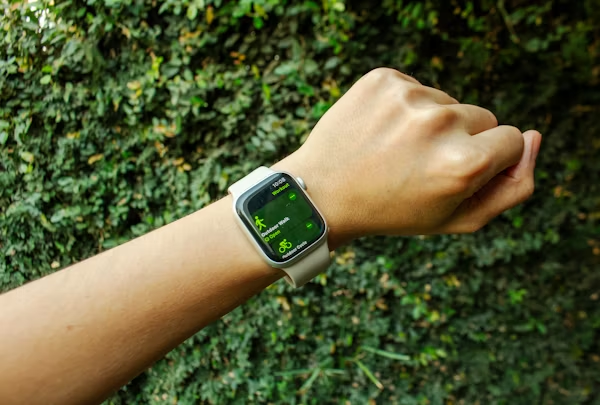Introduction
Hypertension also known as high blood pressure, is often called a silent killer. You cannot sense it, but it earns this name because of its unnoticed presence. You don’t feel it, but it could be wrecking your health behind the scenes. Thankfully, science just gave us a crystal-clear answer on how much exercise we need each week to keep our blood pressure under control. The answer isn’t just inspiring—it’s doable!
Understanding Blood Pressure
What Is Blood Pressure?
Blood pressure shows the force of blood pressing against roadway walls when the heart pumps. Croakers record it with two figures: systolic on top and diastolic below. The actual reading is around 120/80 mmHg.
The Dangers of High Blood Pressure (Hypertension)
High blood pressure increases the risk of heart problems, strokes, kidney damage, and memory issues.
The scary part? Most people do not notice any signs until it becomes serious.
Global Statistics and Health Impact
More than 1.2 billion people globally live with high blood pressure. It’s one of the leading causes of preventable death worldwide. Now, let’s talk about how we fight back—with exercise.
The Link Between Exercise and Blood Pressure
Why Exercise Affects Blood Pressure
Regular exercise increases and builds cardiac function. It reduces the demand placed on your blood highways. Regular exercise increases blood flow, lowers stress, and supports hormonal balance. These rudiments aid you in controlling your blood pressure.
Types of Physical Activities That Help
- Aerobic (cardio)—brisk walking, jogging, swimming
- Resistance: lifting weights or using resistance bands
- Flexibility exercises—yoga and stretching
Role of Cardio, Strength Training, and Flexibility
Cardio directly impacts your heart health, strength training helps manage weight, and flexibility routines ease physical stress. Together, they’re your dream team against hypertension.
What the Study Says
Key Findings from the Latest Research
A groundbreaking study published in Hypertension, a journal of the American Heart Association, found that at least 150 minutes of moderate-intensity exercise or 75 minutes of vigorous-intensity exercise per week significantly lowers blood pressure.
Recommended Duration and Intensity
- Moderate-intensity: 30 minutes/day, 5 days a week
- Vigorous-intensity: 25 minutes/day, 3 days a week
Moderate vs. Vigorous Activity Explained
- Moderate: You’re slightly out of breath but can still talk (e.g., brisk walking)
- Vigorous: You can only say a few words without pausing (e.g., running or HIIT)
Weekly Exercise Targets for Blood Pressure Control
Combine both moderate and vigorous activities to meet the total target of 150–300 minutes per week.
Breaking It Down by Age & Lifestyle
For Young Adults
Start early to prevent future issues. Try sports, cycling, or dance classes.
For Middle-Aged Individuals
Your metabolism slows down. Stay consistent with morning walks, gym workouts, or swimming.
For Seniors
Focus on low-impact exercises like walking, tai chi, or water aerobics.
Considerations for People with Pre-existing Conditions
Always consult a doctor first. Start slow and gradually build up. Even daily 10-minute walks make a difference.
How to Start Your Exercise Routine
Beginner Tips for Safe Workouts
- Warm-up before
- Cool down after
- Stay hydrated
- Wear comfortable shoes
Building an Exercise Schedule
Create a weekly plan. Switch up activities to keep yourself motivated. Try doing cardio one day and yoga the next.
Balancing Rest and Activity
Rest is key for recovery. Take at least one full day off each week to rest.
Exercise Isn’t a One-Size-Fits-All
Importance of Personalisation
Everyone’s body responds differently. Age, weight, genetics, and health conditions matter.
Listening to Your Body
Sore? Take a break. Tired? Adjust your routine. There’s no shame in slowing down.
Additional Lifestyle Changes for Better Blood Pressure
Nutrition and Diet
Eat more.
- Leafy greens
- Whole grains
- Low-fat dairy: Avoid
- Salt
- Sugary drinks
- Processed foods
Sleep and Stress Management
Poor sleep = higher BP. Get 7–9 hours. Try meditation, journaling, or deep breathing.
Avoiding Harmful Habits
Quit smoking. Cut back on alcohol. Limit caffeine. Your heart will thank you.
Real-Life Success Stories
Case Studies from Participants
One woman in her 50s lowered her BP from 145/90 to 122/78 by walking 40 minutes a day, 5 days a week—for just 3 months.
The Psychological Boost from Exercise
Exercise releases endorphins—natural mood boosters. You feel empowered, energetic, and alive.
Final Thoughts
Keeping your blood pressure in check doesn’t require living at the gym. Spending 30 minutes moving around five times a week can make a big difference in your life.
science-backed and life-saving.
Don’t wait for a health scare. Take a step today—literally. Your future self will be grateful.
FAQs
1. Can walking alone lower my blood pressure?
Yes! Brisk walking for 30 minutes a day, five days a week, can significantly reduce blood pressure levels.
2. How fast will I see results from exercise?
Some people see improvements within 2–4 weeks. It might sometimes require as long as 3 months. Staying consistent is important.
3. What’s better: one long workout or several short ones?
Both work. Three 10-minute walks spread across the day have similar benefits as one 30-minute session.
4. Do I still need medication if I exercise regularly?
Maybe. Some people can reduce or even stop meds, but only under a doctor’s supervision.
5. Is yoga effective for blood pressure?
Absolutely! Yoga reduces stress and improves blood circulation, making it a great low-impact choice.








